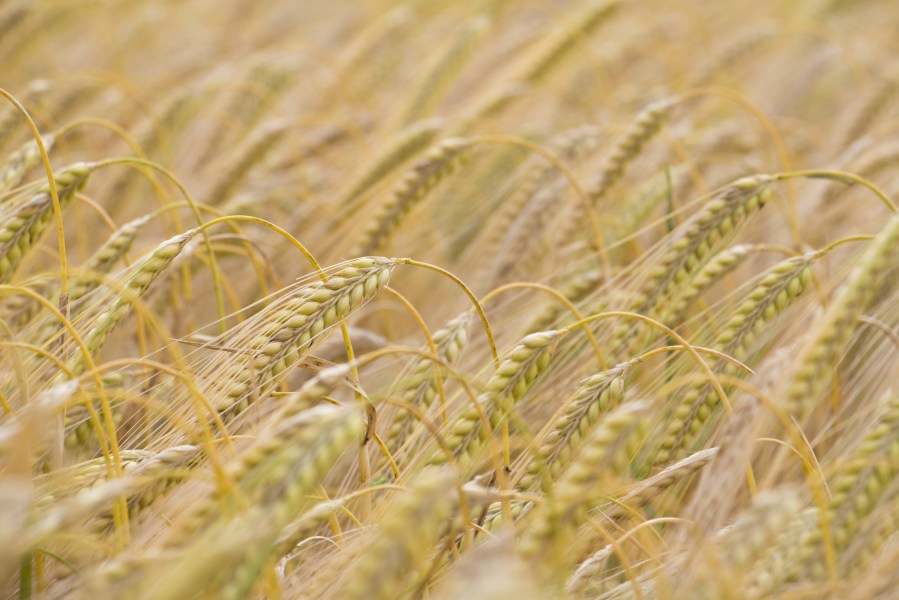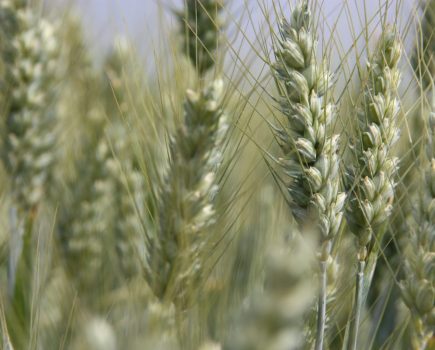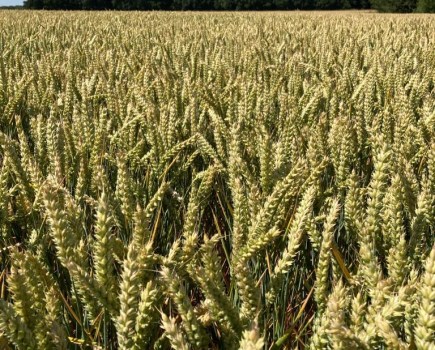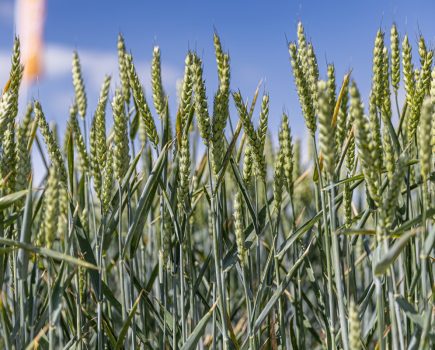A variety doesn’t have to be brand new to the market for it to have merit that may have thus far gone underappreciated, as CPM finds out when it takes a closer look at LG Capitol, a two-row winter feed barley.
“It performs across all regions which is the kind of versatility the industry requires.” JOE WOOD
By Melanie Jenkins
The ‘capitol’ is often associated with a US building where Congress meets to set out legislature and can be referred to as ‘the Capitol’, ‘the Capitol Building’, or ‘Capitol Hill’, but Limagrain’s version is a little different and could be said to reside on a hill all of its own.
Sitting comfortably in the top three conventional feed varieties on AHDB’s Recommended List, LG Capitol is a high yielding winter barley with a combination of strong specific weight and a good disease resistance profile.
Although Capitol isn’t new to the RL – now in its second year of recommendation – its consistent position as one of the top yielding two-row winter barleys means it very much has a place on farm, says Limagrain’s Ron Granger.
“A sister variety to LG Caravelle, Capitol came along a year behind with very similar yield and slightly lower disease score, however, it’s still a stand-out variety for the market.”
According to Wynnstay’s Joe Wood, it’s hard to overlook Capitol’s high yield. “It’s a headline feature and it performs across all regions which is the kind of versatility the industry requires.
“We have growers with the variety from the tip of Cornwall, into West Wales and to the Scottish Borders, and there have been no issues with it. Even last year, which was very difficult for a lot of growers, Capitol produced good yields.”
The key with Capitol, is that it’s demonstrated several years of consistency throughout national trials testing prior to RL recommendation, and the variety has since produced two years of reliable performance on farm, explains Ron. “It’s shown high consistency of annual treated yieled between 2021 and 2024, with figures of 105%, 106%, 105% and 105%, in annual treated trials respectively, and its UK score on the RL for 2025/26 sits at 106%.
“We’ve had difficult and varied seasons during this time, ranging from droughts to extreme rainfall, but Capitol has performed well across regions and soil types, making it a consistent and resilient choice for farmers. And I believe this is something we, as breeders, are getting better at achieving with our varieties,” he says.
Limagrain breeder, Sophie Buon, points out that Capitol performs well on heavy soils especially. “It’s the best variety on the RL for heavy soils and does even better than Caravelle, at 110% of control.”
In line with this consistency is Capitol’s high untreated yield at 90%. “This gives growers some peace of mind that the variety will still deliver when they can’t access land at the ideal time to apply fungicides,” adds Ron.
Capitol’s untreated yield is supported by strong agronomics which make it a low maintenance variety, believes Joe. “The high untreated yield is a trait that originally attracted Wynnstay to the variety.
“This score is more representative of what can happen on farm where, for example, extreme wet periods can often impact T0, T1 and the early spring fertiliser applications. So by having a variety with a strong untreated yield, this provides reassurance for growers.”
According to Ron, Capitol has good standing ability, strong grain quality at 69.9kg/hl, with respectable screenings. “It has all of the desirable attributes that make up a good two-row feed variety.
“Its grain is large and bold which is something people may not realise, but I think it’s a great attribute to have. This means when we have drier seasons, or when it’s grown on lighter medium soils, the variety still tends to perform well because this larger berry size will pull the variety through and allow it to achieve better yields.”
Dalton Seeds’ David Huish has also been impressed with Capitol. “From my experience it maintains good standing with a lodging score of 7 and an average straw length of 88cm, although I think it may generally be shorter than the RL suggests.”
Wynnstay was keen to determine if there was a lodging risk with the variety but has confirmed that the straw stands well, says Joe. “The only area of management to focus on is to encourage yields through optimising fertiliser timings – this will help you achieve the most from the crop.”
A further feature of the variety is its straw yield, says Ron. “We mustn’t underestimate the importance of this factor. Everyone talks about wanting taller varieties, but I’ve observed during the past few years that varieties like Capitol and Caravelle tiller more than older varieties.
“It’s not just about the height, it’s also about the number of tillers a variety has which contributes to both grain and straw yield. In a year like this where we’ve had drought conditions, we could see straw increase in price, so it’s valuable to have higher straw-yielding varieties.
“Maintaining tiller numbers is the priority with winter barley and to do this we‘ve found that early applications of nitrogen are beneficial, just like for hybrid barley,” suggests Ron. “Further to this, there are seed treatment and foliar products to both encourage root mass and maintain tiller numbers which is especially important when plants may come under stress in the more testing soil types.”
In terms of drilling window, David believes Capitol could be drilled a week earlier than Caravelle. “I believe it could go in from around 15 September, giving growers more flexibility if required.”
Due to the decreased oilseed rape area, this year particularly, there’s been a reduction in the amount of barley planted, says Joe. “It’s been a tricky market and where we’ve had wet autumns leading to growers focusing on planting wheat, where arable land has been placed into SFI, plus the feed value hasn’t been very encouraging, this has all had a knock-on effect on the amount of barley being drilled.
“But it’s always a cyclical process and the less barley in the ground, the more desirable it becomes to buyers.”
Ron believes that if the weather is favourable this year, then there could be more OSR planted again which may result in more winter barley in rotations. “When this happens, cereal ore livestock farmers are going to be looking for resilient varieties with strong disease and grain quality, something that won’t let them down and will deliver on straw.”
As for what could be next in the barley variety pipeline, Joe hopes to see rarer genetics introduced for disease or virus control, such as increased BYDV tolerance. “I think this gradually has to become more prevalent which will result in a host of new two-row varieties coming onto the list.
“We don’t want to lose sight of having a stable and reliable crop but the more we can achieve genetically to take the pressure off sprays and seed treatments, the better.”
Sophie confirms that breeders are focused on producing varieties with BYDV tolerance and resistance. “The current challenge is working to stack the particular genes involved to build a greater tolerance and help cut the use of insecticides on farm.
“We’re also exploring increased rhynchosporium resistance, improved nitrogen use efficiency and are working to create varieties better able to tolerate extreme weather and climate change. During the past few years we’ve increased the number of nurseries we’re operating to enable us to explore these traits further.”
As breeding technologies advance, newer varieties will be entering the market faster. For example, Capitol took six years to reach the market from when it was first bred, whereas previously it would have taken eight years, explains Sophie.
“Because we’re now using genomic selection, we can predict which varieties will perform best when they’re young and this is then confirmed in the field. Capitol was one of the varieties which looked outstanding from an early stage and has proven to perform consistently since, which is down to genomic selection.
“So the quicker we can select varieties using genomics, the faster we can react to what farmers require and to climate change.”
The versatility of Capitol across all regions and soil types is something Joe believes should be highlighted. “We deal with a range of growers; from large arable units in the East to dairy and sheep farms in Wales, so we want to promote varieties like Capitol, which are suited to both light and heavy land.
“I believe if growers gave it a shot, then the chances are they’d be opting to grow it again the following year because it really is a strong variety.”
This article was taken from the latest issue of CPM. Read the article in full here.
For more articles like this, subscribe here.
Sign up for Crop Production Magazine’s FREE e-newsletter here.




